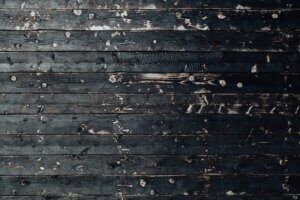Fire Restoration Services: Understanding Fire Damage Classifications
Fire Restoration Services: Understanding Fire Damage Classification
Summary
The article provides an in-depth guide to understanding fire damage classifications, crucial for both fire restoration services and insurance claims. It details four primary classes—A, B, C, and D—each requiring different restoration approaches and having distinct implications on costs and timelines. The piece also touches on immediate steps, item salvageability, restoration duration, and insurance coverage, emphasising the importance of prompt and specialised fire restoration services for effective recovery.
In the unnerving aftermath of a fire, one of the most daunting tasks homeowners face is dealing with the damage and hiring the right fire restoration services for the job. Often, the extent and type of fire damage dictate the restoration procedures, costs, and timeline. As a leader in fire restoration services, we aim to educate you on fire damage classifications. A comprehensive grasp of these categories can significantly ease your restoration process.
The Four Primary Classes of Fire Damage
Class A: Combustible Materials
Fires that involve combustible materials like paper, wood, and textiles fall under Class A. These fires are typically easier to extinguish but can cause substantial charring and structural damage. When assessing Class A fire damage, professional fire restoration services look for soot deposits, warped wood, and moisture damage from firefighting efforts.
Class B: Flammable Liquids and Gases
Class B fires are a result of flammable liquids or gases, such as gasoline, oils, or propane. The aftermath can involve complicated chemical residues and potential explosions. Cleanup for Class B fires requires specialised treatment to remove toxic chemical residues that can be harmful if inhaled or touched.
Class C: Electrical Fires
Electrical fires, or Class C fires, originate from faulty wiring, overloaded electrical outlets, or malfunctioning electrical appliances. These fires can be treacherous as they often spread quickly and quietly within walls. The remediation process may require complete rewiring, which significantly elevates the fire restoration services cost and extends timelines.
Class D: Metals
The least common but most difficult to extinguish are Class D fires involving metals like magnesium, potassium, or sodium. Specialised dry powder agents are used to control these fires, which can burn at extremely high temperatures. The resulting damage often involves the complete loss of specific sections of a property.
Implications for Restoration Processes
Structural Assessment for Class A Damage
Class A damage typically involves a structural assessment to determine the integrity of wooden beams and interior walls. Carbon footprints and soot need to be completely removed to prevent future complications like mould growth.
Chemical Treatments for Class B Damage
For Class B damage, chemical treatments are essential to neutralise and remove hazardous residues. Failure to do so can result in long-term health risks and further damage to surfaces.
Electrical Inspections for Class C Damage
Class C damage necessitates rigorous electrical inspections to avoid future fire hazards. Often, the replacement of electrical circuits is inevitable, and failure to do so can result in catastrophic outcomes.
Specialised Cleanup for Class D Damage
Due to the extreme temperatures associated with Class D fires, specialised fire restoration services are mandatory. High-powered vacuums and industrial scrubbers are often employed to tackle metal shards and residual substances.
Insurance Implications
Understanding the classification of fire damage is also imperative for insurance claims. Most insurance companies categorise claims based on the class of fire damage, which in turn affects the amount of coverage you can expect. We recommend consulting with insurance professionals who specialise in fire claims and your insurance provider to navigate this complex landscape effectively.
Having a comprehensive understanding of fire damage classifications not only equips you with valuable insights but also empowers you to make informed decisions. From fire restoration services to insurance claims, your newfound knowledge will serve as a guide in a time of confusion and emotional turmoil.
FAQs
How Soon Should I Contact Fire Restoration Services After a Fire?
It’s crucial to contact fire restoration services as soon as possible after a fire is extinguished. Immediate action can prevent further damage, such as water damage from firefighting efforts or mould growth and can expedite the restoration process. The sooner professionals can assess the damage and begin cleanup, the better.
Can I Salvage My Personal Items After a Fire?
The ability to salvage personal items depends on the extent of the fire damage and the type of item. While some things like paper or fabrics may be irretrievable, items made of metal, glass, or ceramics might be salvageable. Specialized restoration services can also help in recovering photos, electronics, and other valuable items, although there are no guarantees.
How Long Does Fire Restoration Take?
The duration of the fire restoration process varies widely depending on the extent and class of fire damage, as well as the size of the property. While minor repairs may take just a few days, extensive damage requiring structural repairs can take weeks or even months. It’s best to consult with a fire restoration service for a more accurate timeline.
Will My Insurance Cover Fire Damage Restoration?
Coverage for fire restoration services generally depends on your specific insurance policy and the cause of the fire. Most homeowner’s insurance policies cover fire damage, but there may be limitations or exclusions. Always review your policy carefully and consult with your insurance provider to understand the extent of your coverage.
Why Choose AllAces?
With access to industry-leading technologies and equipment, we provide efficient and permanent solutions. Our IICRC-certified technicians deliver professional fire restoration services that will soon have your fire-affected space safe and ready for reuse. Return your property to its pre-loss condition with AllAces Cleaning & Restoration.



